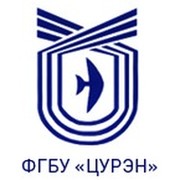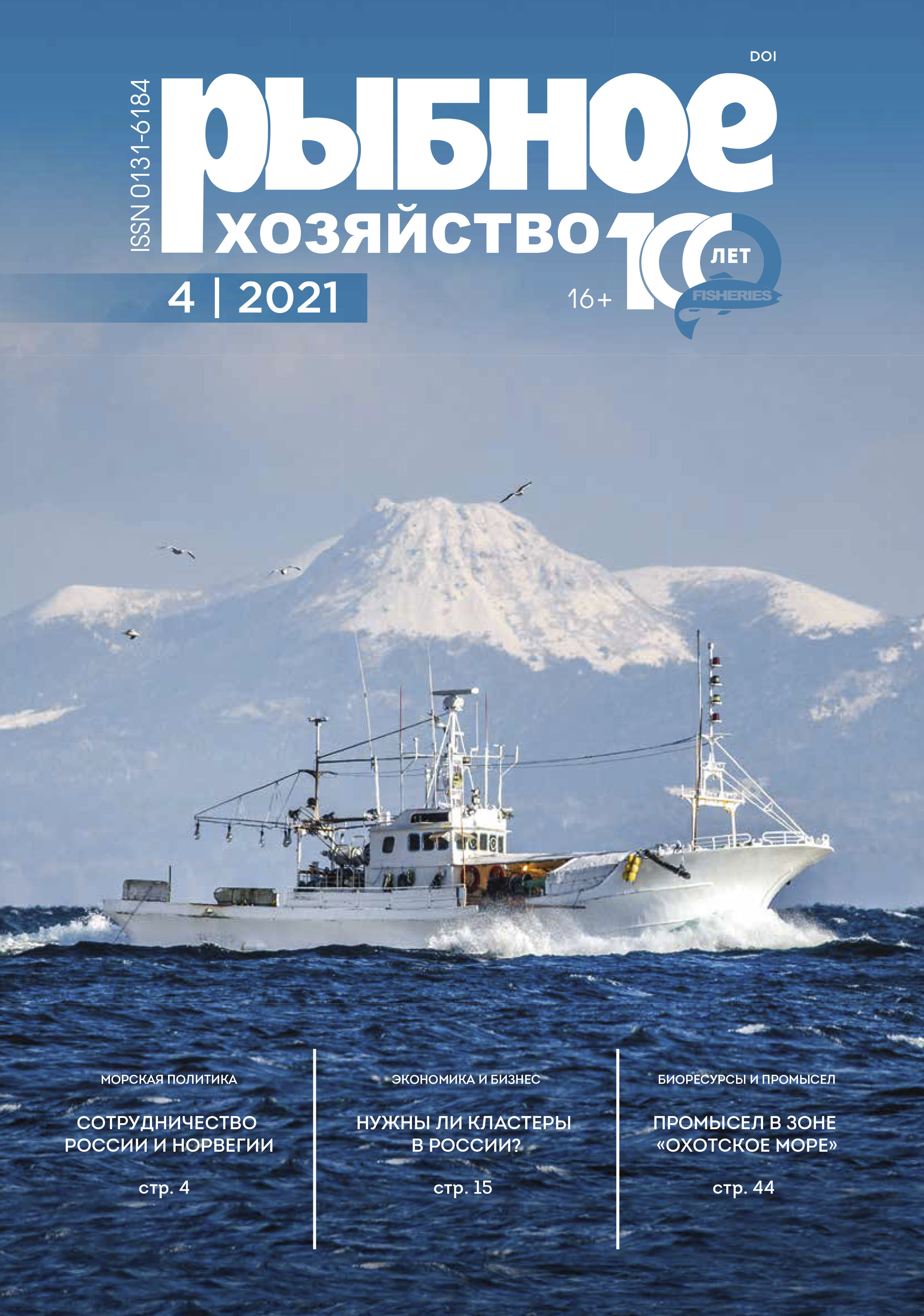Russian Federation
Russian Federation
Russian Federation
Russian Federation
UDC 63
CSCSTI 69.25
Russian Classification of Professions by Education 35.03.08
Russian Library and Bibliographic Classification 472
The perspective of the production of domestic compound feed for the development of industrial aquaculture in Russia is shown. Alternative sources of protein in mixed fodder for salmon and sturgeon have been investigated. The advantages of using protein hydrolysates instead of a part of fishmeal in compound feed are described. The advantages of protein hydrolysates from fish by-products are considered, the chemical composition and molecular fractional composition of sublimated protein hydrolysates obtained by enzymatic and thermal pathways from sardinella scales and ridges are studied. The presence in hydrolysates of 53.3 - 97.7% of low molecular weight peptides with a molecular weight of less than 10 kDa with a total protein content of 80.8-94.1% was established. Indicators of amino acid balance (scor) of hydrolyzates of scales and ridges of sardinella were calculated in relation to the established requirements for amino acids in salmonids. Indicators of amino acid balance (scor) of hydrolyzates of scales and ridges of sardinella were calculated in relation to the established requirements for amino acids in salmonids.It was found that the introduction of an enzymatically obtained hydrolyzate is more favorable for an increase in the content of limiting amino acids in mixed feed, and the use of sardinella scales for hydrolysis is more preferable than its ridges.
industrial aquaculture, compound feed, salmon farming, amino acid balance, alternative protein source, fish by-product, hydrolysates
1. Ostroumova I.N. Biological bases of fish feeding. 2nd edition, ispr. and add. - St. Petersburg: GosNIORH, 2012 - 564 Pp.
2. Bakhareva A.A. Fish feeding in industrial fish farming / A.A. Bakhareva, Yu.N. Grozescu // Abstracts of the Intern. nanopart. Conf.: Scientific production and socio-economic development of the comprehensive reclamation of the Caspian region". - S. Salt zaymishche, Astrakhan region, 2006. - Pp. 560-567.
3. Shcherbina M.A., E. A. Samygin Fish feeding in freshwater aquaculture. / M.A. Shcherbina, E.A. Samygin - M: VNIRO Publishing house, 2006. - 360 p.
4. Mezenova O.Ya. Analysis of the state of the economy and prospects for the use of biotechnology in the fishing industry of the Kaliningrad region (VAK) / O.Ya. Mezenova, M.P. Andreev, V.I. Sauskan, S.V. Agafonova and others // Fisheries. - 2020. - No. 5. -Pp. 38-50. DOIhttps://doi.org/10.37663/0131-6184-2020-5-38-50
5. Glencross B., Hawkins W. Comparison of the digestibility of feed from lupin (lupinus sp.) as food protein resources when feeding rainbow trout, oncorhynchus mykiss or red sea shrimp, pagrusauratus // Nutrition in aquaculture. - 2004. - Volume 10 (2). - Pp. 65-73.
6. Ledyuk A. Hydrolysates of by-products of food aquaculture: influence on the transcriptomic response of the intestinal mucosa of European sea bass (Dicentrarchuslabrax) obtained on diets with a low content of fish meal / A. Ledyuk, K. Zatylny-Godin, M. Robert, E. Corre, G. Le Corguille, H. Castel, A. Lefevre - Schelles, V. Fournier, E. Gisbert, K.B. Andri, J. Henry // Genomics BMC. - 2018. - 19:396.
7. Ostroumova I.N. Inclusion of bacterial biomass and protein hydrolysates in starter feeds for whitefish (Coregonidae) / I.N. Ostroumova, V.V. Kostyunichev, A.A. Lyutikov, V.A. Bogdanova and others // Questions of fisheries. - 2018. - Volume 19 (No. 1). - Pp. 82-98.
8. Tsibizova M.E. Study of technological properties of fish autolysates obtained from small-sized raw materials of the Volga-Caspian basin / M.E. Tsibizova, K.V. Kostyurina // Bulletin of the AGTU. Series: Fisheries. - 2010. - No. 1. - Pp. 176-181.
9. Gisbert E. Hydrolysates of protein from yeast and pig blood as an alternative raw material in microdiets for larvae of golden-headed sea bream (Sparusaurata) / E. Gisbert, A. Scully, I. Fernandez, Y. Kotsamanis, J.L. Zambonino-Infante, R. Fabregat // Aquaculture. - 2012. - Vol. 338-341. - Pp. 96-104.
10. Ostroumova I.N. Inclusion of bacterial biomass and protein hydrolysates in starter feeds for whitefish (Coregonidae) / I.N. Ostroumova, V.V. Kostyunichev, A.A. Lyutikov, V.A. Bogdanova and others / / Questions of fisheries. - 2018. - Volume 19 (No. 1). - Pp. 82-98.
11. Zheng K. The effect of hydrolysate of edible fish protein on the growth, feed use and IGF-I levels of Japanese flounder (Paralichthysolivaceus) / K. Zheng, M. Liang, H. B. Yao, J. L. Wang, K. Chang // Nutrition in aquaculture. - 2012. - Volume 18 (3). - S. 297-303.
12. Hua K. The Future of water protein: implications for protein sources in aquaculture diets / K. Hua, J. Cobcroft M., A. Cole, K. Condon, D. R. Jerry, A. Mangott, C. Praeger, M. Dzh. Bucko, K. Zen, K. Senger, John.M. Strugnell // One Earth. - 2019. - Volume 1. - Pp. 316-329.
13. Patent of the Russian Federation for the invention 2681352 for the production of food additives from secondary fish raw materials using hydrolysis, registered in the state Register of inventions of the Russian Federation on 6.03.2019, the decision to issue 11.01.2019, priority of 31.01.2018 / O.Ya. Mezenova, S.V. Agafonova, L.S. Baidalinova, L.V.Gorodnichenko, V.V Volkov., N.Yu. Mezenova, T. Grimm, A. Heling.
14. Mezenova O.Ya. Comparative evaluation of methods of hydrolysis of collagen-containing fish raw materials in the production of peptides and the study of their amino acid balance / O.Ya. Mezenova, V.V. Volkov, T. Merzel, T. Grimm and others / / Izvestiya vuzov. Applied Chemistry and biotechnology. - 2018. - Volume 8. - No. 4. - Pp. 83-94.
15. Grishin D.V. Bioactive proteins and peptides: current status and new trends in practical applications in food and feed production / D.V. Grishin, O.V. Podobed, J.A. Gladilina, M.V. Pokrovskaya, etc. // power Issues. - 2017. - Volume 86. - No. 3. - Pp. 20-31.
16. Slizayt R. Bioactivity of fish protein hydrolysates from skimmed salmon bones / R. Slizayt, K. Rommi, R. Mozuraitite, P. Ekk, K. Five, T. Rustad // Reports on biotechnology. - 2016. - V. 11 - Pp. 99-109.











